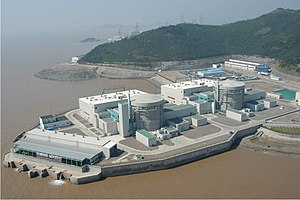The world’s growing need for energy, the limits of our supply of fossil fuels and concern about the effects of carbon emissions on the environment have all prompted interest in the increased use of nuclear power. Yet the very word “nuclear” carries with it an association of fear. People are concerned about the waste produced by reactors, the possibility of catastrophic accidents as highlighted by recent events in Japan and the link between nuclear power and nuclear weapons. Yet what if there existed a means of nuclear power generation with which these risks were drastically reduced?
The answer could be thorium – an element occurring as a silvery metal that’s more abundant, cleaner and can produce more bang-per-buck in energy terms than uranium. So how does thorium differ from uranium and plutonium, and why isn’t it being used? First, a quick run-down on how nuclear energy works.
What is nuclear power?
The word “nuclear” refers to the nucleus, or dense center of the atom. In a nuclear power reactor, these nuclei are split into smaller parts through a process known as fission. A sub-atomic particle known as a neutron strikes the nucleus of an atom of suitable fuel (particular isotopes of the heavy elements uranium and plutonium) breaking it into its component parts. Each fission results in the release of energy in the form of electromagnetic radiation and kinetic energy in the fragments of the split nucleus. This effect is twofold; the release of energy will produce heat, and the release of neutrons, which can in turn fission other atoms.
In material that has typically been employed as nuclear fuel, this reaction occurs in a “chain reaction” and is self-sustaining. When this is occurring, the reactor can be said to be”‘critical”. In a fission weapon, a mass of plutonium or uranium in excess of critical is assembled very quickly, with a flood of neutrons from a device known as an “initiator”. The release of energy is extremely rapid and results in a massive explosion.
In a nuclear power reactor, the reaction is far slower and more controlled – the heat produced can be harnessed to boil water to spin turbines for the generation of electricity and this has been in practice for decades. The use of nuclear reactors for power generation began on 27 June 1954 at the Obninsk power plant in the former Soviet Union and has continued in numerous countries to this day.
There are of course, some significant problems with nuclear power. Fission reactions will always result in the production of radioactive waste products which require secure storage and pose a health risk to humans and the environment. There is the possibility that the operators may lose control of the fission chain reaction resulting in an accidental release of this material (often referred to as a “meltdown”). There’s also the concern that reactors may also be used for the production of material suitable for nuclear weapons.
Modern nuclear reactors
The two main types of reactors used for commercial power generation are the pressurized water reactor (PBR) and the boiling water reactor (BWR), which both typically make use of uranium in the form of uranium oxide fuel rods. The criticality of the reactor is managed by control rods, which when inserted absorb neutrons that would otherwise cause the chain reaction to continue. The reactor can be shut down, or “scrammed”, by the rapid insertion of these control rods. However, this is a manual process and there is a possibility of an error occurring.
Criticality, fertility and the potential of thorium
The element thorium, named after the Norse god of thunder, may provide a safer alternative as a fuel. The key difference between thorium and other nuclear fuels is that it cannot sustain a chain reaction on its own. Fissile fuels like uranium and plutonium are able to sustain a chain-reaction, yet fission can also be achieved in material like thorium that is not fissile but fertile – i.e. it can produce fissile material, if neutrons are provided from an outside source.
Thorium is estimated to be three to four times more plentiful than uranium in the Earth’s crust and has the advantage of being found in nature in the one isotope, which makes it suitable as a nuclear fuel as it need not be enriched to separate the right isotope. For convenience, thorium fuel can be used in the form of a liquid molten salt mixture.










